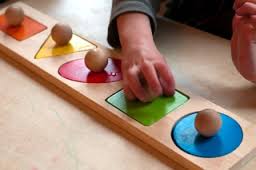Dyspraxia is often seen and referred to as generally clumsiness or poor balance. Simply described – it is the inability to perform learned movements accurately.
Dr. Robin Pauc of The Carrick Institute, Cape Canaveral, USA is an expert on dyspraxia and many other learning disabilities. She provides a comprehensive explanation of dyspraxia in her book ‘Is That my Child’
“Dyspraxia is defined as a partial loss of the ability to perform coordinated acts. At one time called ‘clumsy child syndrome’, it is an inability or difficulty in planning and carrying out planned movements, or in orientating yourself within your environment. For a child this means that daily tasks like tying shoelaces and feeding themselves, and fun things like riding a bike, are enormous challenges. Not knowing exactly where you are in space means that you constantly bump into things or drop things.”
![3787721913_0cac5fcfbd_z[1]](https://www.dyslexiadaily.com/wp-content/uploads/2014/08/3787721913_0cac5fcfbd_z1-300x219.jpg)
Developmental dyspraxia occurring in children can have the following symptoms:
- Difficulties with both fine and gross motor skills such as writing, painting, using a knife and fork, running, skipping and hopping.
- Poor balance
- Difficulty with vision – tracking, vergence etc
- Difficulties with planning a movement and perception. This can include the bodies preparation for a movement and awareness of how you body is operating within a space
- Difficulty with reading, writing and speech
- Poor social skills
- Emotional and behavioral problems
Dyspraxia rarely stands alone. Research has shown that children who have been diagnosed with dyslexia, attention deficit disorder (ADD), attention deficit hyperactivity disorder ADHD, obsessive compulsive disorder (OCD) or Tourette’s syndrome of childhood can also present with dyspraxia.


















